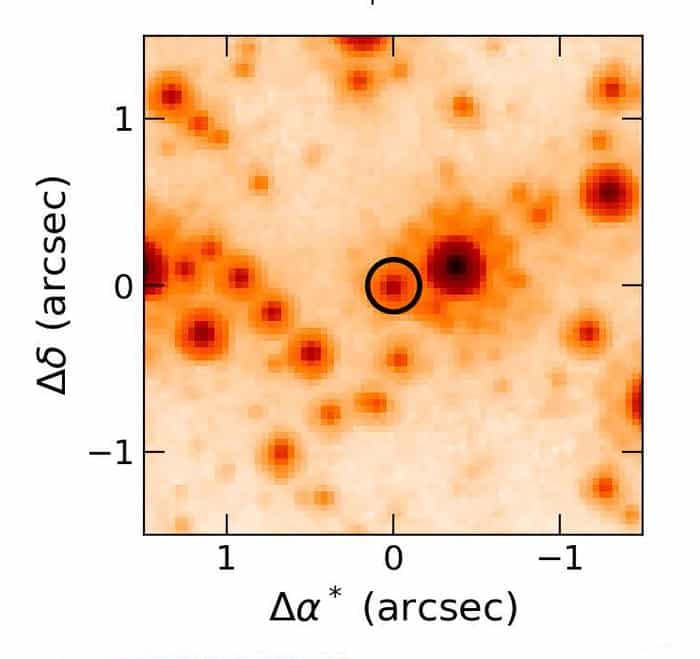Free-floating black hole could be distorting light from distant star
11 Jul 2022
Distorted star: Hubble Space Telescope image of a distant star that was brightened and distorted by an invisible but very compact and heavy object between it and Earth. (Courtesy: STScI/NASA/ESA)
Astronomers have spotted a massive object that could be the first free-floating black hole ever observed using gravitational microlensing. The team of researchers was led by Casey Lam and Jessica Lu at the University of California, Berkeley and made the discovery by combining microlensing survey data with observations from the Hubble Space Telescope. Their study was the first exhaustive attempt to identify black holes that do not have a companion star – free-floating objects that are believed to be abundant throughout the Milky Way.
Stellar-mass black holes are born out of dramatic supernova explosions, triggered as massive stars collapse under their own gravity. Astronomers predict that hundreds of millions of black holes exist throughout the Milky Way, but so far, just around two dozen have been identified definitively. All of these are in binary systems: paired with stars whose movements indicate the presence of an invisible companion. Yet many astronomers believe that these pairs a not a representative sample, and that most black holes are isolated.
One way to detect a solo black hole is to observe the effect its gravity has on passing starlight. The gravitational distortion of spacetime surrounding the black hole can focus light from a background star onto Earth. This changes the brightness of the star and shifts its position in the sky. Because of the relative motions of objects in the cosmos, the effect lasts for several weeks or months – so microlensing could be detected by looking for temporary changes in appearance of stars. However, numerous microlensing surveys have been done over the past 25 years and so far, there have been no confirmed observations of solo black holes.
Temporary distortions
Now Lam, Lu and colleagues have combined over 120 days of ground-based microlensing measurements with data from the Hubble Space Telescope, which monitored ongoing changes to background starlight over the same period. There were able to identify five candidate events where the background starlight was temporarily distorted over month-long timescales.
Further analysis suggested that four of these events were probably caused by less massive objects such as neutron stars or white dwarfs. The fifth event looks much more promising and the team has calculated that it is associated with an object in the 1.6–4.4 solar mass range. This means that the lensing object is either a neutron star or a black hole. The object is also relatively close to Earth –the team calculates it is 2–6 light-years away.
Although the precise nature of the object is unknown, Lu points out that “This is the first free-floating black hole or neutron star discovered with gravitational microlensing”.
The team now plans to use further data from the Hubble Space Telescope along with more advanced modelling techniques to determine whether the object is a black hole. Even if the object does turn out to be a neutron star, the observation bodes well for future black hole searches using microlensing.
The research is described in The Astrophysical Journal Letters.
Sam Jarman is a science writer based in the UK.
from physicsworld.com 20/7/2022

Δεν υπάρχουν σχόλια:
Δημοσίευση σχολίου